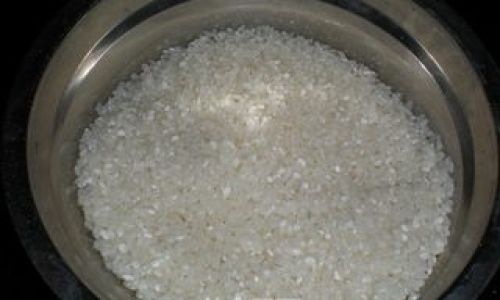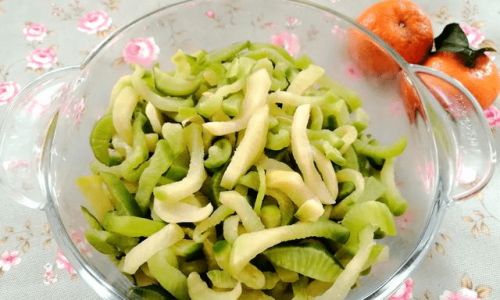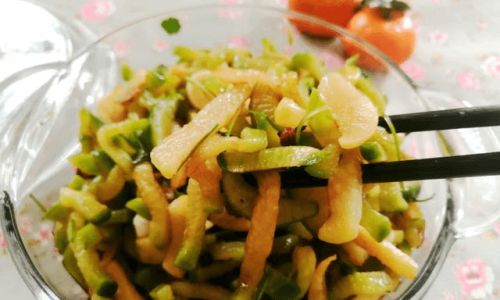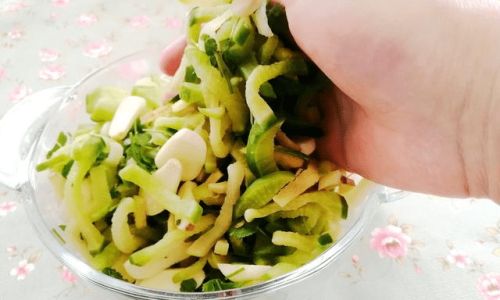Introduction
Rice soup, a humble yet comforting dish, has been a staple in many cultures around the world for centuries. Its simplicity and versatility make it an ideal choice for a quick meal, a soothing remedy, or a hearty addition to any diet. Whether you’re looking to warm up on a cold day, nourish your body after an illness, or just enjoy a delightful homemade meal, learning how to make a perfect rice soup is a skill worth mastering.
In this comprehensive guide, we’ll walk you through the entire process of making rice soup, from selecting the right ingredients to perfecting your cooking technique. We’ll cover various styles and flavors, offering tips and tricks to suit your preferences and dietary needs. By the end of this article, you’ll be equipped with the knowledge and skills to create a rice soup that’s not only delicious but also nutritious and satisfying.

Chapter 1: Understanding the Basics
Before diving into the specifics of making rice soup, it’s essential to understand the fundamental principles that govern its preparation. This chapter will cover the basic components, essential tools, and general steps involved in making a basic rice soup.
1 Ingredients
The cornerstone of any rice soup is, of course, rice. While any type of rice can be used, long-grain rice is typically preferred for its ability to remain separate and fluffy when cooked, which helps to avoid a gluey texture. However, short-grain or medium-grain rice can also be used, especially if you prefer a creamier consistency.
Water or broth forms the liquid base of the soup. Chicken, vegetable, or beef broth can add depth of flavor, while plain water will result in a more neutral, blander soup that can be seasoned to taste.
Seasonings and additional ingredients can vary widely, depending on your personal preferences and cultural influences. Common additions include onions, garlic, carrots, celery, and herbs like thyme, bay leaves, and parsley. For a more substantial soup, you might include proteins like chicken, pork, or beans, and vegetables like potatoes, peas, or spinach.
2 Tools and Equipment
Making rice soup requires minimal equipment, but having the right tools can make the process more efficient and enjoyable. Here’s a list of essential items:

- A large pot or Dutch oven with a heavy bottom to ensure even heat distribution.
- A wooden spoon or ladle for stirring and serving.
- A knife and cutting board for chopping vegetables.
- Measuring cups and spoons for accuracy.
- A colander or strainer for draining and rinsing rice.
- Optional: A blender or immersion blender for creating a smoother soup texture.
3 Basic Steps
The basic steps for making rice soup are straightforward but require attention to detail to ensure success. Here’s a general outline:
- Prepare Ingredients: Rinse and drain the rice, chop the vegetables, and measure out the broth or water.
- Sauté Vegetables: In a large pot, sauté onions, garlic, and other aromatic vegetables until they are soft and fragrant.
- Add Rice and Liquid: Stir in the rice and pour in the broth or water. Bring the mixture to a boil.
- Simmer: Reduce the heat to low, cover the pot, and let the soup simmer until the rice is tender and the liquid has been absorbed.
- Season and Serve: Taste the soup and adjust the seasoning with salt, pepper, and herbs as needed. Serve hot.
Chapter 2: Selecting and Preparing Ingredients
The quality of your ingredients will directly impact the final flavor and texture of your rice soup. This chapter will provide guidance on selecting the best ingredients and preparing them properly.
1 Choosing Rice
When selecting rice for your soup, consider the following factors:
- Type: Long-grain rice is best for maintaining separation, while short-grain or medium-grain rice can create a creamier texture.
- Quality: Look for rice that is free of stones, debris, and broken grains. Opt for organic or non-GMO rice if you prefer.
- Storage: Store rice in an airtight container in a cool, dry place. Avoid exposing it to moisture, which can cause it to spoil.
2 Broth and Water
The choice of broth or water will significantly affect the flavor of your soup. Here are some tips:

- Homemade vs. Store-Bought: Homemade broth is often more flavorful and nutritious, but store-bought broth can be a convenient alternative.
- Type of Broth: Chicken broth is classic, but vegetable or beef broth can also be used. Consider your dietary preferences and the flavors you want to highlight.
- Low-Sodium Options: If you’re watching your sodium intake, look for low-sodium broth options and adjust the seasoning accordingly.
3 Vegetables and Proteins
When choosing vegetables and proteins for your rice soup, consider their texture, cooking time, and flavor profile. Here are some suggestions:
- Vegetables: Choose a mix of hard and soft vegetables to ensure a balanced texture. Hard vegetables like carrots and potatoes will take longer to cook, while softer vegetables like peas and spinach will cook quickly.
- Proteins: Chicken, pork, and beans are popular choices. If you’re vegetarian or vegan, consider tofu, tempeh, or legumes like chickpeas or lentils.
- Aromatics: Onions, garlic, and celery are essential for building a flavorful base. Don’t skip them!
4 Seasonings and Herbs
Seasonings and herbs can transform a basic rice soup into a gourmet dish. Here are some ideas:
- Salt and Pepper: The foundation of any savory dish. Adjust to taste.
- Fresh Herbs: Parsley, thyme, bay leaves, and rosemary can add complexity and depth.
- Spices: Cumin, paprika, and turmeric can add warmth and interest.
- Acid: A splash of vinegar, lemon juice, or tomato paste can brighten the flavors and balance the richness of the soup.
Chapter 3: Cooking Techniques and Variations
Now that you understand the basics, let’s dive into the cooking techniques and variations that can take your rice soup from good to great.
1 Stovetop Method
The stovetop method is the most traditional way to make rice soup. Here’s a step-by-step guide:

- Sauté Aromatics: In a large pot, heat oil over medium heat. Add chopped onions, garlic, and celery (if using) and sauté until soft and fragrant, about 5-7 minutes.
- Add Rice and Vegetables: Stir in the rinsed rice and any hard vegetables like carrots or potatoes. Cook for another 2-3 minutes, stirring occasionally.
- Pour in Broth: Pour in the broth or water, making sure it covers the rice and vegetables by about an inch. Bring the mixture to a boil.
- Simmer: Reduce the heat to low, cover the pot, and let the soup simmer until the rice and vegetables are tender, about 20-30 minutes. Check occasionally to ensure the soup isn’t drying out. If it’s too thick, add more broth or water.
- Add Soft Vegetables and Proteins: Stir in any soft vegetables like peas or spinach and cooked proteins like chicken or beans. Let the soup cook for another 5-10 minutes until heated through.
- Season and Serve: Taste the soup and adjust the seasoning with salt, pepper, and herbs as needed. Serve hot, garnished with fresh herbs or a dollop of yogurt if desired.
2 Slow Cooker Method
The slow cooker is a great option for making rice soup if you want to set it and forget it. Here’s how to do it:
- Prepare Ingredients: Follow the same steps as the stovetop method for sautéing aromatics, adding rice and hard vegetables, and pouring in broth.
- Transfer to Slow Cooker: Transfer the mixture to a slow cooker. Add any soft vegetables and proteins at this point.
- Cook: Cover and cook on low for 6-8 hours or until the rice and vegetables are tender.
- Season and Serve: Taste the soup and adjust the seasoning as needed. Serve hot.
3 Instant Pot Method
The Instant Pot combines the convenience of a slow cooker with the speed of a pressure cooker, making it an excellent choice for rice soup. Here’s how to use it:
- Sauté Aromatics: Set the Instant Pot to the sauté setting. Add oil, onions, garlic, and celery (if using) and sauté until soft and fragrant.
- Add Rice and Vegetables: Stir in the rinsed rice and hard vegetables. Cook for another 2-3 minutes.
- Pour in Broth: Pour in the broth or water. Stir to combine.
- Pressure Cook: Secure the lid and set the Instant Pot to manual high pressure for 4-6 minutes (depending





0 comments